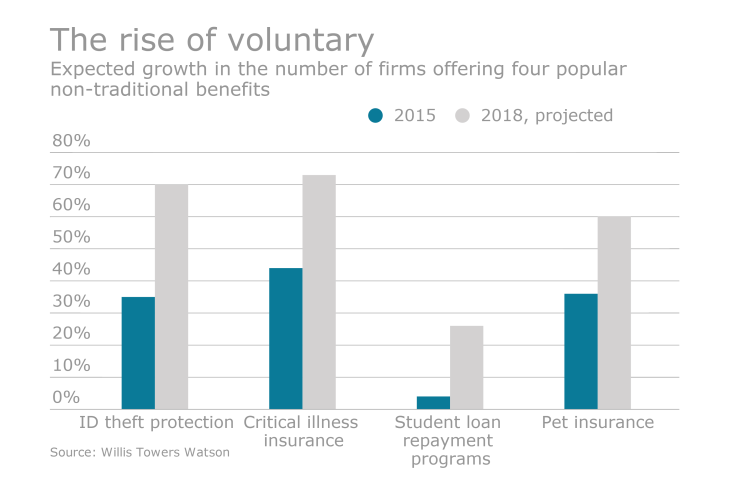As the healthcare landscape continues to evolve and employer plans become more intricate, having a benefits communication plan in place is paramount to retain talent and increase product utilization.
“Medical insurance will become less stagnant and focused on HSAs, meaning less avenues for employers to differentiate. But that opens up a great opportunity for highly customized voluntary benefits,” Josh Roland, principal and practice leader at OneDigital Health and Benefits, said last week at EBN’s Benefits Forum & Expo in Boca Raton, Fla.

Roland joined Greg Hammonds, VP, specialty market sales, The Standard; Alex Ward, regional VP at SE Hodges-Mace; and Will Peterson, AVP of HR for Phoebe Putney, in a session on the future of voluntary benefits.
Employers can offer the most innovative and creative voluntary benefits, Roland said, but if those benefits aren’t communicated well, they become useless.
For new hires in particular, there are so many decisions to be made that satisfaction levels can drop, Ward noted. Many employers struggle with the fact that there are more generations of employees in the workforce than ever before, he said. And each generation needs to be engaged in a different way.
He said that for Hodges Mace, different avenue approaches have resulted in the opportunity to try new things. For example, the Atlanta-based benefits technology company recently rolled out its mobile app.
One employer that has taken a high-level approach to customization and communication is Georgia healthcare provider Phoebe Putney Health Systems.
According to a recent Eastbridge study, the national average for indemnity participation hovers around 6%. But for Phoebe Putney, recent participation numbers hit close to 20%, thanks to a positive enrollment message delivered through a variety of methods, including face-to-face and self-service enrollments via direct and electronic messaging.
In addition to strategizing successful enrollment opportunities, Peterson said, the hospital’s journey to a creative voluntary benefits platform relied on strong partnerships with brokers and insurer.
Align with appropriate partners and collaborate with those partners to ensure efficient and integrated application of products and services, he said.
“It’s a journey,” Peterson said. “We hit some places in that journey that we stopped and had to re-navigate.”
He advised attendees at the session to avoid the cookie-cutter plans that he said are cluttering the marketplace. Speak to your organization and your culture when developing your voluntary packages, he said.
“You have to design it. You have to build it. And you have to deliver it,” he said.





